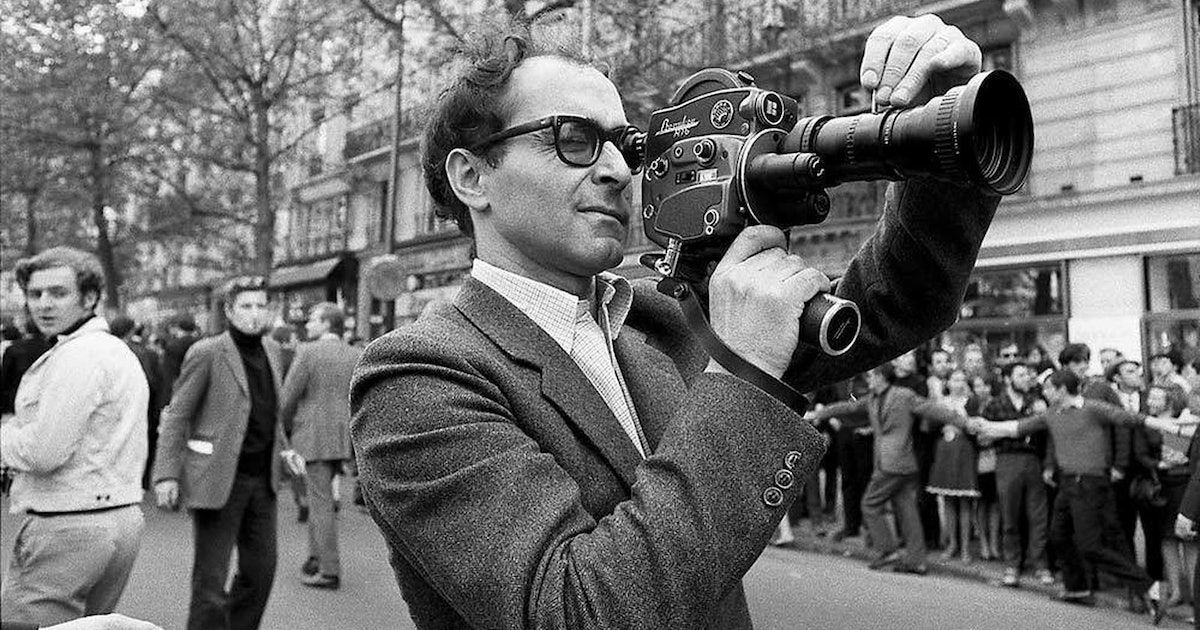
Jean-Luc Godard, pioneer of the French New Wave, and one of the most revered filmmakers of all time, has died at 91. His radical approach to cinema redefined the form and language of the medium and gave birth to a body of work that continues to inspire filmmakers today, even as it continues to challenge our notions of narrative structure and the craft of cinema.
Throughout the 1950s and 1960s, Godard and his contemporaries developed their own unique style, a movement that would come to be known as the French New Wave (La Nouvelle Vague). During this period, he and other filmmakers such as Francois Truffaut, Éric Rohmer, Jacques Rivette, Agnes Varda, and Claude Chabrol, experimented with new approaches to editing, narrative, and visual style, while also engaging with the social and political tensions of the time.
While his earlier films in the 1960s remain his most recognizable, Godard continued to test radical ideas and approaches to film well into old age, constantly expanding the vocabulary of cinema and pushing us to imagine what the medium can do. With a career that spans over 60 years his influence on cinema is impossible to overstate, and we catch echoes of it throughout the works of major contemporary filmmakers including Martin Scorsese, Wong Kar Wai, and Quentin Tarantino.
What follows is a list of 5 essential Godard films. While most of them are from his earlier career we strongly encourage you to check out his other films.

“Breathless” (1960)
It wouldn’t be a stretch to say that Breathless is the quintessential French New Wave film. Godard’s debut feature premiered on March 16, 1960 in 4 Parisian theaters, but it wasn’t long before it took the cinematic world by storm. Through its radical editing choices–which included the first major application of jump cuts– punchy and unforgettable dialogue, and unconventional rhythm and timing, Godard took elements from American crime films and turned them on their head to create a masterpiece that still feels as cool and new as it did 60 years ago. Jean-Paul Belmondo stars as an aviator-rocking, cigarette-smoking, apathetic criminal with a fascination for Bogart who falls for a gorgeous American student (Jean Seberg). The film is also noted for its documentary style camera-work and Jean Seberg’s iconic New Wave Pixie haircut.

“Contempt” (1963)
Godard’s impressive drama film is based on the 1954 Italian novel Il disprezzo by Alberto Moravia, and is noted for its lush technicolor visuals and breathtaking cinematography. Michel Piccoli stars as a brooding and temperamental screenwriter hired by vulgar producer (Jack Palance) to rework the script for Fritz Lang’s adaptation of the Odyssey. Tensions rise when the producer takes a liking to the screenwriter’s wife (Brigitte Bardot) and she begins to suspect that she’s being used by her husband to advance his career. In the most searing sequence of the film the couple engage in an explosive argument at their apartment, capturing the complete dissolution of their marriage in a scene that was shot through an extended series of tracking shots filmed in real time.

“Pierrot Le Fou” (1965)
If Breathless is the quintessential French New Wave film, then Pierrot Le Fou is the quintessential Godard film. An adaptation of American author Lionel White’s 1962 crime novel Obsession, the film stars past collaborators Jean-Paul Belmondo and Anna Karina as a dissatisfied married man who leaves behind his monotonous bourgeoisie lifestyle to run off with his ex-girlfriend who’s pursued by OAS hitmen from Algeria. The film features meticulous compositional shots, bright color schemes reminiscent of the pop-art movement, and numerous references to mass culture. Even as the work enacts a critique of the French Bourgeoisie and the politics of the time (something that would become increasingly prevalent in Godard’s future work) its story is kept warm and entertaining through the chemistry of the two leads.

“Two or Three Things I Know about Her” (1967)
A meditation and commentary on our relationship to advertising and consumerism, Two or Three Things I Know about Her finds Godard leaning into a cine-essay style of filmmaking that he would continue to explore later on in his work. Inspired by an article he read about prostitution in the suburbs, the film rejects the narrative arc and is less a story than it is a depiction of a day in the life of a bourgeoisie married woman (Marina Vlady) who moonlights as a prostitute. Narration in a whispered style is present throughout the film as Godard relays his fears and thoughts concerning several political and social issues including the Vietnam War.

“Goodbye to Language” (2014)
Godard’s penultimate work is a 3D experimental essay-film that tells the story of a couple having an affair through differing versions of events portrayed by two different pairs of actors (and at one point it would appear as though someone is murdered). Like many of Godard’s other works the film focuses on ideas of language and communication, and interrogates our relationship to art, consumerism and pop-culture. Also featured in a major role is Godard’s dog Roxy who won a prize at the Cannes Film Festival (probably for underdog of the year). While the most innovative shots of the film will be lost to streaming services unable to replicate the 3D effects created by Godard and cinematographer Fabrice Aragno, the film remains a visual and narrative spectacle worth watching. Though I’m not entirely sure what it’s about I found it enjoyable nonetheless.

Austin Torres is an English major currently finishing his master’s degree on the Literature track at FIU. His pastimes and hobbies include watching films, reading books, painting and swimming.
